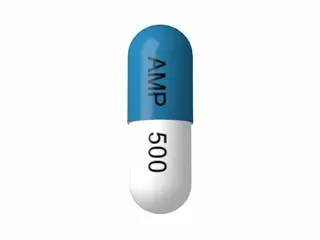| Package | Dosage | Price | Price per Dose | |
|---|---|---|---|---|
| Dosage: 250mg | ||||
| 270 pill | 250mg | AUD268.15 | AUD0.99 | |
| 180 pill | 250mg | AUD183.59 | AUD1.01 | |
| 120 pill | 250mg | AUD125.61 | AUD1.04 | |
| 90 pill | 250mg | AUD99.03 | AUD1.09 | |
| Dosage: 500mg | ||||
| 270 pill | 500mg | AUD587.05 | AUD2.17 | |
| 180 pill | 500mg | AUD401.02 | AUD2.22 | |
| 120 pill | 500mg | AUD275.39 | AUD2.30 | |
| 90 pill | 500mg | AUD224.66 | AUD2.49 | |
| 60 pill | 500mg | AUD169.09 | AUD2.80 | |
| 30 pill | 500mg | AUD99.03 | AUD3.31 | |
| 20 pill | 500mg | AUD74.87 | AUD3.74 | |
| 10 pill | 500mg | AUD38.63 | AUD3.79 | |

Acillin Description
Introduction to Acillin
Acillin is a medication that is used to treat a variety of bacterial infections. It belongs to a class of antibiotics known as penicillins, which work by stopping the growth of bacteria. This medication is often prescribed for respiratory tract infections, skin infections, urinary tract infections, and other bacterial illnesses. Its effectiveness relies on its ability to target and eliminate harmful bacteria, helping the body's immune system to recover more quickly.
How Acillin Works
The active ingredient in Acillin disrupts the synthesis of bacterial cell walls. Unlike some antibiotics that target specific bacteria, Acillin generally has a broad spectrum of activity, making it versatile in treating different bacterial strains. Once administered, it binds to certain bacterial enzymes, preventing the cross-linking of cell wall components. This action weakens the bacterial cell wall, leading to cell rupture and death. Because of this mechanism, Acillin is particularly effective against actively dividing bacteria.
Usage and Dosage Recommendations
Acillin is typically taken orally, with or without food, depending on the specific formulation and doctor's instructions. The dosage varies based on the severity of the infection, patient age, weight, and overall health. It is crucial to complete the full course of treatment as prescribed, even if symptoms improve before finishing the medication. This prevents the bacteria from developing resistance, which could make future infections more difficult to treat. If a dose is missed, it should be taken as soon as remembered unless it's close to the next scheduled dose.
Possible Side Effects
Like many antibiotics, Acillin can cause side effects in some individuals. Common issues include gastrointestinal discomfort such as nausea, vomiting, and diarrhea. Some people may experience allergic reactions, which can range from mild rash to more severe symptoms like difficulty breathing or swelling of the face and throat. It is important to seek medical attention immediately if any signs of an allergic reaction occur. Less common side effects can include yeast infections, skin rash, or changes in blood counts. Patients should report any unusual or persistent symptoms to their healthcare provider.
Precautions and Interactions
Before starting Acillin, inform your doctor about any allergies to penicillin or other antibiotics. People with a history of allergies may be at increased risk for allergic reactions. It is also important to disclose any other medications being taken, as Acillin can interact with certain drugs, such as other antibiotics, oral contraceptives, and blood thinners. Patients with kidney or liver problems should discuss these conditions with their healthcare provider before using Acillin, as dosage adjustments may be necessary.
Effectiveness and User Satisfaction
Many users report that Acillin effectively clears bacterial infections when taken as prescribed. Its broad-spectrum activity makes it a reliable choice for many common infections. Patients often notice improvement within a few days of starting treatment. However, some individuals may experience side effects that affect their comfort or adherence to the therapy. Overall, Acillin is considered a well-tolerated and efficient medication for bacterial infections. Consistent adherence to the prescribed regimen tends to yield the best health outcomes.
See Also
